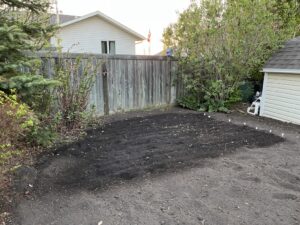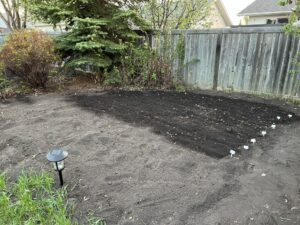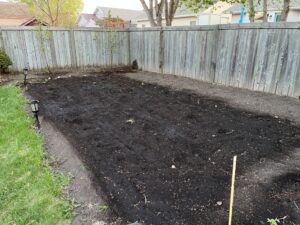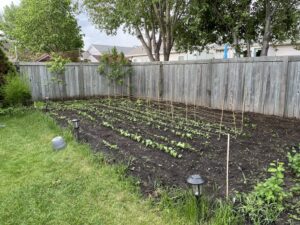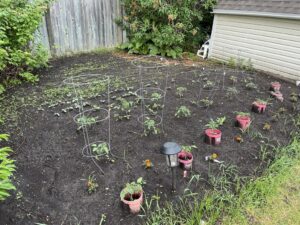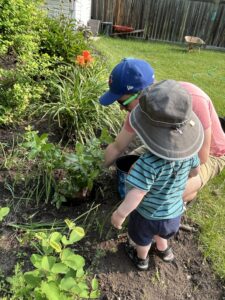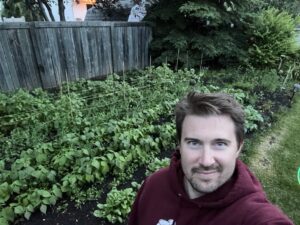This spring 2023 semester of EC&I 831, Social Media and Open Education, was very different than my initial visualizations when I first read the course synopsis. My first impression was that there would be a more prevalent focus on academic rigour, which I had taken to be the norm for most courses (this is a graduate-level course… of course). Instead, it diverged: blogging and posting! Chatting and sharing! Social media as an assignment! It’s been very different than my expectations, but I’m glad it’s been. I have never been much of a blogger or overall sharer of my progress with something, so it took some time to adjust to the structure. With this summary of learning, I felt it appropriate to continue with the blogging format, as it is something so different than other formats I’ve used thus far in my graduate program, such as presentations and video recordings.
At the outset of this course, and the reveal that much of our efforts were to be devoted to learning… for the sake of learning, I initially had concerns. What was I supposed to dedicate myself towards? I’d tried this sort of self-paced learning structure at various times since the beginning of the COVID pandemic: I dabbled in guitar, but spent more time reading and delving into ideas and plans than actually practicing. I thought about getting into coding, since it’s been something that I’ve introduced to my Grade 7s at a basic level, who have since absolutely lapped me in their ability. This, too, was short lived.
I knew I needed to find something that had, I wouldn’t call it “stakes”, but something a little more immediate or “urgent”, that depended on my consistent upkeep in order to be successful. It was my wife Nicole who suggested gardening, and it make quick sense to me. It’s something that can’t be delayed or put to the side if one wants any sort of productive yield. We have a large garden space in our backyard, as our house once belonged to my wife’s grandparents, and my wife and her grandmother continued to grow with it since we initially moved in, with me being happily relegated to making sure it was watered. I have a biology degree, but really didn’t have much practical knowledge of gardening.
The initial burst of interest came easily. I began by rototilling the garden, which is one of the two tasks I am usually responsible for. But I never even delved into WHY I was rototilling, other than the time-tested “it’s what we’ve always done”. This time, I needed to know that WHY. A couple quick Google searches later, I understood: tilling helps break up clumped soil, helps spread nutrients around, and can aid in churning detritus under the top layer of soil.
However, my search also produced many articles presenting the other side of the topic, that tilling can actually be detrimental to overall garden health. I’d never thought there was a negative to it. #TheMoreYouKnow. With a greater understanding, I ultimately decided to till, keep track of the overall soil quality in greater detail this year, and try the alternative next season.
Some sources for the pros and cons of tilling a garden include:
- Troy-Bilt: The Benefits of Tilling
- Farm and Dairy: Rototilling tips for the garden
- Gardening Know How: Tilling Advantages vs. No-Tilling Advantages
- University of Saskatchewan: No-till vegetable gardening for home gardens
This first part came easy: I’ve done it before, and it doesn’t require a ton of thinking. Actually plotting out a garden, planting, and allowing it to grow, were things I hadn’t had a role in before. It was important for me to know WHERE each plant was supposed to be, but at the same time, I did have one particular limit set on me: while this garden was part of my course project, it was also still something my wife and her grandmother were connected with, so I needed to make sure I didn’t make drastic changes that affected the overall success of the garden.
I found a well-sourced article from growagoodlife.com, which outlined the practices one should follow when plotting a vegetable garden. Ultimately, I didn’t change the general locations where our vegetables would be, as my wife had the garden planned out before this course began, but rather, I was able to better understand WHY certain species were where they were. It also helped clarify which species grow best together, and which ones would compete against each other. #NatureIsLit.
With the plot established and the garden tilled, it came time to seed. I underestimated the quantity of seeds needing to be planted, while at the same time ensuring there was no overcrowding. I’d say the most annoying seeds to plant were the carrot seeds: they are absolutely minuscule. Nevertheless, I seeded, covered the rows with soil, and applied a healthy dose of water to the garden. With the garden established, and by me this time, I had something to show for my efforts, unlike my previous attempts at self-paced learning.
With this gardening project, I was fortunate to still have help. My wife Nicole, first and foremost, was the one who suggested I choose gardening as my project focus, as her grandmother had reached a point that she wouldn’t be able to physically participate anymore. This is also the first summer our 17-month old son, Ben, is able to “help” with the gardening. It’s been a lot of fun, and I’m looking forward to the next learning project… how to prevent backyard grass from dying from too many toys resting on it… 